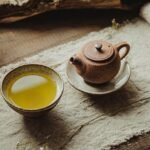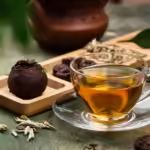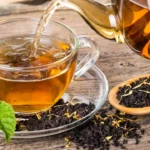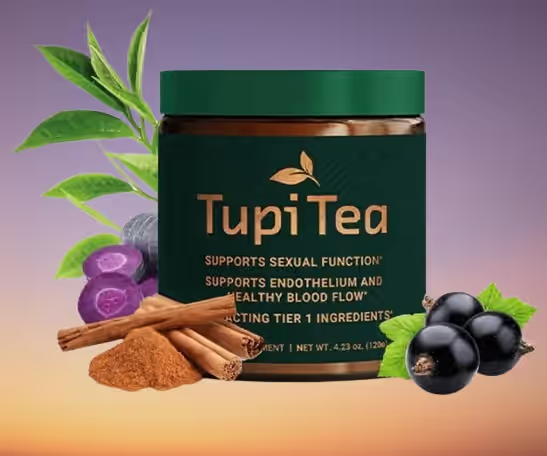Table of Contents
Teas from around the world are as diverse as the cultures that produce them, each with unique flavors, traditions, and benefits. From the refreshing Japanese matcha to the robust Indian chai, tea has become a beloved beverage for millions of people. In this article, we’ll explore ten must-try teas from various regions, their origins, health benefits, and how they have shaped local cultures. Get ready for a flavorful journey through global tea traditions that will leave you craving a cup of your favorite brew!
What Is Tea and Its Global Importance?
Tea is one of the most popular beverages in the world, second only to water. Made from the leaves of the Camellia sinensis plant, this ancient drink has been enjoyed for thousands of years and is deeply embedded in the cultural heritage of many nations.
Each region has developed its own ways of growing, harvesting, and brewing tea, resulting in a vast array of flavors and varieties. For many cultures, tea is not just a drink but a social event, a spiritual practice, and a means of relaxation.
1. Chinese Green Tea: A Legacy of Health and Wellness
When discussing teas from around the world, Chinese green tea is often one of the first to come to mind. Green tea has been consumed in China for over 4,000 years and is prized for its numerous health benefits, including improved metabolism, enhanced brain function, and reduced cancer risks.
Famous varieties like Dragon Well (Longjing) and Gunpowder tea offer a mild, slightly bitter flavor that is loved globally. Green tea is lightly oxidized, which preserves its natural antioxidants, making it a popular choice for those seeking health benefits.
How to Enjoy:
Brew Chinese green tea at lower temperatures (70-80°C or 158-176°F) to avoid bitterness. Drink it plain, without sweeteners, to savor the natural flavors.
2. Japanese Matcha: The Zen of Tea Drinking
Matcha is Japan’s most famous tea export and has gained significant popularity worldwide, especially among health-conscious individuals. Made from finely ground green tea leaves, matcha is rich in antioxidants and offers a unique flavor profile that is both grassy and sweet.
Unlike other teas, matcha requires whisking the powder with hot water, creating a frothy, bright green drink. It’s often associated with traditional Japanese tea ceremonies, where the act of preparing and drinking matcha is as important as the tea itself.
Health Benefits:
Matcha is high in catechins, a type of antioxidant that is believed to protect against heart disease and cancer. It also contains L-theanine, an amino acid known for promoting relaxation without drowsiness.
3. Indian Masala Chai: Spiced Comfort in a Cup
In India, chai is more than just tea—it’s a way of life. Indian masala chai is a blend of black tea, milk, sugar, and an array of warming spices like cardamom, ginger, and cinnamon. This tea is brewed for its comforting aroma and rich, spicy flavor.
Chai is often enjoyed with breakfast or as an afternoon pick-me-up. Each region of India has its own variation of chai, some favoring stronger spices while others prefer a sweeter version.
Health Benefits:

The spices in masala chai offer a variety of health benefits, such as improved digestion, reduced inflammation, and relief from cold symptoms.
4. English Breakfast Tea: A Strong Morning Brew
English Breakfast tea is a robust blend of black teas, typically hailing from Assam, Ceylon, and Kenya. It is one of the most famous blends in the world, known for its full-bodied flavor and dark, reddish-brown color when brewed.
In Britain, tea is not just a beverage but a cultural staple. English Breakfast tea is usually served with milk and sugar, though some prefer it plain or with a slice of lemon.
How to Enjoy:
Steep for 3-5 minutes in boiling water (100°C or 212°F). Pair it with traditional breakfast foods like toast, eggs, or scones.
5. Moroccan Mint Tea: Refreshing and Uplifting
Moroccan mint tea, or Maghrebi mint tea, is a popular drink in North Africa and the Middle East. Made from green tea (usually gunpowder tea) and fresh spearmint leaves, this beverage is served sweetened, often with an abundant amount of sugar.
It is commonly consumed throughout the day, especially after meals, and is associated with hospitality and friendship.
How to Brew:
Use boiling water to brew green tea, then add fresh mint and sugar to taste. Pour from a height to aerate the tea and enhance its flavors.
6. South African Rooibos: The Red Tea of Health
Rooibos, also known as red tea, comes from the leaves of the Aspalathus linearis plant native to South Africa. Unlike black and green teas, rooibos is naturally caffeine-free, making it a great alternative for those who avoid stimulants.
Rooibos has a rich, earthy flavor with hints of sweetness and is packed with antioxidants, which help to fight inflammation and support heart health.
Health Benefits:
Rooibos is rich in polyphenols, which are believed to protect against oxidative stress. It’s also known to alleviate allergies, improve digestion, and support skin health.
7. Yerba Mate: South America’s Energy Drink
Yerba mate is a traditional South American tea made from the leaves of the Ilex paraguariensis plant. Often referred to as “the drink of the gods,” it is known for its energizing properties and is consumed widely in Argentina, Paraguay, and Uruguay.
Yerba mate contains caffeine, theobromine, and other natural compounds that provide an energy boost without the jittery side effects commonly associated with coffee.
How to Brew:

Mate is traditionally served in a hollowed-out gourd and sipped through a metal straw. Hot water is poured over the tea leaves repeatedly, allowing the brew to be shared among friends.
8. Turkish Tea: A Symbol of Hospitality
In Turkey, tea is synonymous with hospitality. Turkish tea is typically served strong and in small, tulip-shaped glasses. It’s brewed in a two-tiered kettle known as a çaydanlık, where one part holds boiling water, and the other contains tea leaves.
Turkish tea is consumed black, often with sugar but without milk, and is a staple in daily life. Offering a glass of tea is a gesture of goodwill in Turkish culture.
How to Serve:
Serve Turkish tea with a side of sugar cubes and enjoy it with pastries or Turkish delight.
9. Thai Iced Tea: Sweet and Creamy Indulgence
Thai iced tea is a popular street drink in Thailand, known for its vibrant orange color and sweet, creamy taste. Made from black tea, sweetened condensed milk, and spices like star anise and tamarind, this refreshing beverage is served over ice.
How to Enjoy:
Thai iced tea is best enjoyed on a hot day. Brew strong black tea, mix with sugar and spices, and pour over ice before topping with condensed milk.
10. Russian Caravan: A Smoky Blend with History
Russian Caravan tea is a blend of black teas, often including lapsang souchong, which gives it a smoky flavor. This tea gets its name from the 18th-century trade route where tea was transported via camel from China to Russia.
With its bold, smoky taste, Russian Caravan is best enjoyed plain or with a dash of milk.
Conclusion
Teas from around the world offer a fascinating glimpse into different cultures, each with its own rich history and traditions. Whether you’re sipping a cup of Moroccan mint tea or enjoying a frothy bowl of matcha, tea is a universal experience that connects people across the globe. So, the next time you’re in the mood for something new, try one of these teas from around the world and savor the flavors of far-off places.












